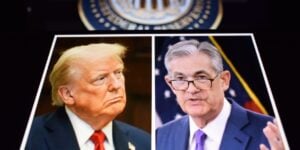Textbooks often list three main functions of money: medium of exchange, store of value, and unit of account. Economic theory works to discover the underlying mechanisms that give rise to money. Specifically, in a mathematical model, theorists can isolate each function money serves. To date, theorists have been successful (though not perfectly so) at creating simple models to account for the store of value and medium of exchange roles.
Paul Samuelson’s famous overlapping generations (OLG) model from 1958 explained money as a store of value. In an OLG model, different people are born and die at different dates (a point only an economic theorist would consider novel). The old people may not be able to work enough to support themselves based on their current production. Foreseeing such a problem, people want a vehicle to turn resources they produce while young into resources they can consume while old. And storing goods in a shed would be costly.
Money is a simple way to convert resources today into resources tomorrow. Rather than stocking up on all the resources you produce while young, you hold onto money and spend it when you are old. The physical resources that an old person consumes are produced by contemporary young workers, but her money has stored the value she produced but did not consume when young.
Modeling money as a medium of exchange is almost as old, going back at least to Joe Ostroy’s 1973 paper. It has seen a resurgence in the last 30 years through the monetary search literature started by Kiyotaki and Wright. All such models are fundamentally about a lack of a double coincidence of wants: I want your good, but you do not want mine. Instead of being stuck without the ability to trade, you accept an alternative good — money — that you will use as a medium of exchange in a future trade.
While economic theorists have developed many models for money as a store of value or medium of exchange, explaining money’s role as a unit of account remains elusive. Recent work, such as a paper in Econometrica by Matthias Doepke and Martin Schneider, is correcting that shortcoming. But there is still much work to be done.





